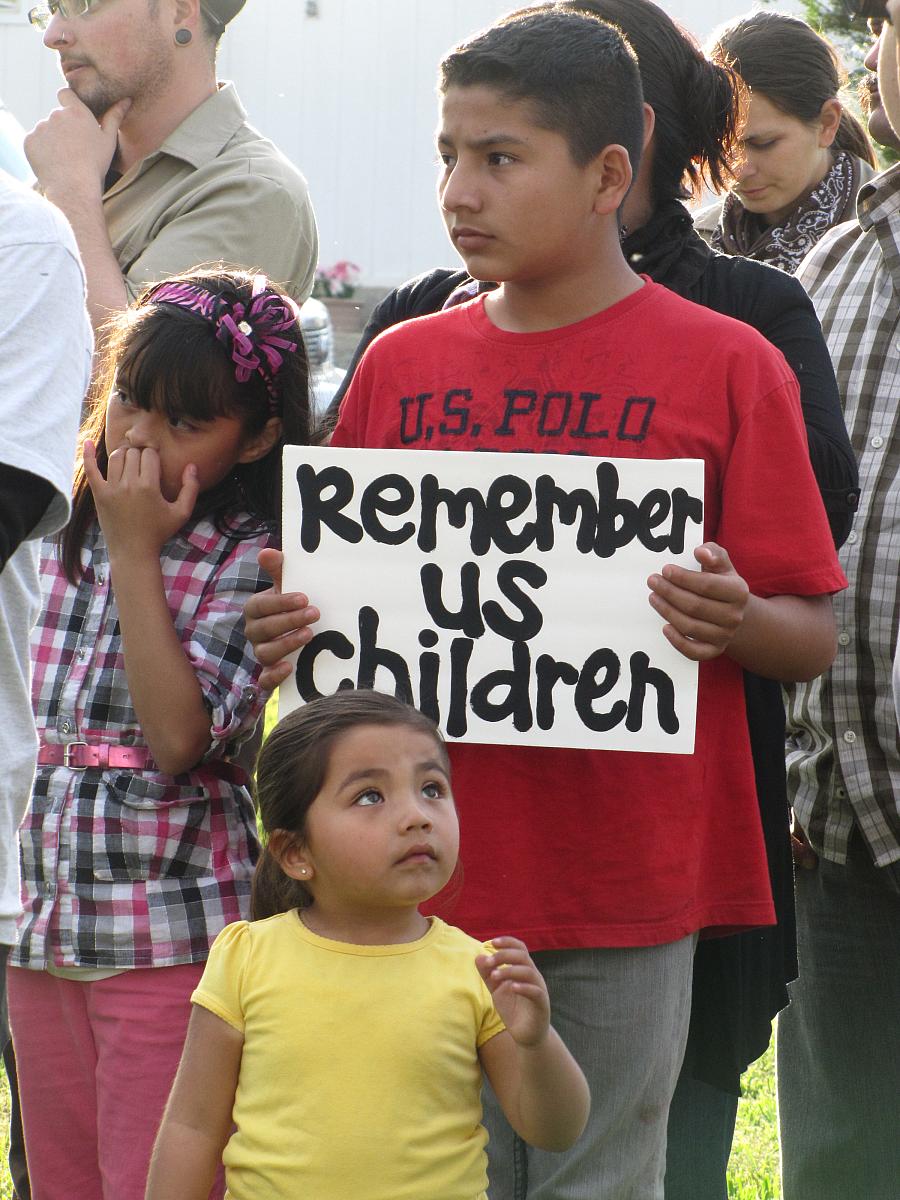Environmental reporter considers layers of health threats when reporting on hazards

Earlier this month, Fresno Bee reporter Mark Grossi took a new approach to writing about environmental health hazards in California’s San Joaquín Valley.
Instead of focusing on just one environmental problem in Kettleman City - which is home to the largest hazardous waste landfill in the West and an inexplicable cluster of birth defects that developed about five years ago - Grossi looked at the multiple health risks that residents of the tiny farmworker community face.
Residents of Kettleman City, a poor, majority Latino town in Kings County, are also exposed to pesticides and diesel smoke, and are served with poor drinking water. On top of all that, Grossi reported, treated human sewage from Los Angeles County is supposed to be composted on farmland east of the community, as soon as late summer.
“Nobody is investigating those increasing layers of environmental threat - the hazardous waste, diesel exhaust, pesticides and tainted drinking water,” he wrote in his Jan. 13 article. “The government enforces tough environmental and monitoring regulations on the air and water, but nobody looks at the entire picture.”
Grossi, who has reported and edited natural resources stories since the 1970s, told me he had wanted to write a version of this story for about 20 years. Ever since he had reported on unexplained childhood cancer clusters in the farmworker communities of McFarland and Earlimart in the late 1980s and early 1990s, he’d been aware that science wasn’t fully capturing or explaining the extent of the health threats in the region. “You knew they would not find anything when they were searching for answers - it was very frustrating to people,” Grossi told me in a phone interview.
In 2011, the University of California, Davis, published a study analyzing the “cumulative environmental vulnerabilities” in the San Joaquín Valley. The report, ‘Land of Risk; Land of Opportunity,’ analyzes the environmental health risks in the Valley, and their impacts on the most vulnerable residents of the area.
The report backed up the hunch Grossi has had for years. He witnessed the influx of mega-dairies and huge prisons to the agricultural region, and the development of the Valley’s “habit of hosting businesses that nobody wants for a neighbor,” as he wrote in his story. He knew the region was burdened by various environmental threats, but didn’t think science - or newspapers - were analyzing them from a cumulative approach. “It changed everything,” Grossi said of the UC Davis report. “It allowed me to be able to talk about these layers of risk in more than an anecdotal way.”
His piece lends weight to the community's belief that it could be the "toxic landscape" surrounding their town that caused the local health problems. He intends to continue reporting on these cumulative health impacts in a monthly series for the Bee.
I asked Grossi for some tips on covering environmental health and environmental justices issues, especially when there is limited science or academic research to support communities’ concerns. He recommended entering the issue by reporting the basic story first - focusing on what the problem appears to be, and how authorities and businesses are responding.
“Play it extremely safe, then take a harder look,” Grossi said. “I don’t think you can parachute in and understand all the environmental justice issues, without first getting up to speed on exactly what’s happened in the past. It starts with being informed.”
He stressed that these are very difficult - but important - stories to investigate.
“This is the highest form of journalism,” Grossi said. “It’s incorporating the science, the law, economics, politics, and several layers of social theory. You’re bringing together so many different disciplines into one place, so this is not for somebody who doesn’t understand the courts, or doesn’t understand which agency in the state government collects statistics on what.”
“Any time you’re going to try to walk into some kind of story where you’re representing people who don’t have a voice, you need to understand a lot of the complexities behind the issues, and why they don’t have a voice, and that’s not really easy to access,” Grossi explained.
In my next post, I’ll include tips on reporting environmental justice stories from Ruxandra Guidi, a 2011 California Endowment Health Journalism Fellow, and Erica Peterson, a 2012 National Health Journalism Fellow.

